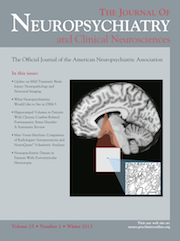A Novel Viewpoint on Parameter Estimation in a Chaotic Neuron Model
To the Editor: A biological neuron model is a mathematical representation of neurons that describes and predicts biological processes. It is known that neurons show chaotic behavior in some conditions. The characteristic of this chaotic behavior is non-periodic in nature, despite the pseudo-periodic behavior. Although chaotic systems have pseudo-random behavior in time, they are deterministic in phase space (i.e., if we plot the time series as a trajectory in a coordinate of system variables, we will encounter an ordered and specific topology, which is called “strange attractor.”1
In 1984, Hindmarsh and Rose introduced a neuronal model described by three first-order differential equations. It has the potential ability to propose a variety of dynamic behaviors for membrane potential, which include chaotic dynamics.2 This model has three variables: membrane potential, spiking variable (the rate of sodium and potassium transport through fast ion channels), and bursting variable (the transport of other ions thorough slow channels).2 The model has six parameters, and varying them not only changes model behavior quantitatively, but also changes it qualitatively. In other words, if we plot the trajectory in phase space, changing the parameters will change the strange attractor geometry.
In order to have a model that has the most similarity to the system, these parameters should be tuned exactly. The question is how the similarity of the model and the real neuron is measured. Since chaotic systems are sensitive to initial conditions, it is not possible to use the similarity of the model and real neuron in time/space (e.g., using the time correlation between the real neuron signal and the model signal). However, we know that if the parameters are tuned well, the strange attractor form of the model and the real neuron should be the same.
It seems that designing a criterion for quantifying the geometric similarity of these attractors may be a good solution. Surely, complementary studies for extracting features from strange-attractor topology could be useful. Having a fine neuron model may cause a valuable progression in microscopic analysis of neural disturbances as attention deficit3 or Parkinsonism,4 in which chaotic behaviors are observed.
1 : Chaos and Nonlinear Dynamics: An Introduction for Scientists and Engineers, 2nd Edition. New York, Oxford University Press, 2001Google Scholar
2 : A model of neuronal bursting, using three coupled first-order differential equations. Proc R Soc Lond B Biol Sci 1984; 221:87–102Crossref, Medline, Google Scholar
3 : A chaotic viewpoint on DBS treatment of Parkinson’s disease. J Neuropsychiatry Clin Neurosci 2010; 22:E12–E13Crossref, Medline, Google Scholar
4 : Detection of attention using chaotic global features. J Neuropsychiatry Clin Neurosci 2010; 22:E20Crossref, Medline, Google Scholar



